It is obvious that cycling in my 60’s is different than cycling in my 20’s, 30’s or even 40’s. It takes more effort to keep my muscular strength and I feel more pain in my knees when climbing stairs or riding up a steep hill. To counter some of the effects of aging, participating in a regular exercise program is a high priority.
It also means I should regularly do pre and post ride exercises. Despite knowing this, I often neglect to do them and my body tells me when I don’t. To avoid this self-inflicted pain, focusing on this aspect of e-biking has become more important to me.
Why pre and post ride exercises?
While cycling is a low impact activity, doing a short warm up before you start cycling activates the body and mind to be ready to perform. A three to five minute warm-up increases your blood flow and gets the muscles ready. This is particularly important if you have any ongoing joint or muscle pains.
The cool down, on the other hand, reduces the chance of sore muscles, body stiffness while reducing your body temperature and blood pressure.
All good things for older cyclists.
Pre and Post Ride Exercise Recommendations
In preparing this post, I sought the advice of a local physiotherapist at Crowfoot Physiotherapy in Calgary. I was referred to Joshua Kim who is the clinic’s kinesiologist and fitness specialist. He compiled a selection of pre and post ride exercises that would benefit any cyclist but older cyclists in particular.
The pre and post ride exercises outlined don’t provide a comprehensive fitness regime. They will, however, assist you in enjoying your rides and reducing sore muscles or joint pains. Completing them should only take 10 minutes or so.
For each exercise, there is a brief description along with a link to a video to demonstrate the correct way to do each exercise. Complete as many reps as you comfortably and safely are able to. To access more exercises, check with your local physiotherapy clinic.
Pre-Ride Exercises
1. Squats 5 reps/3 sets
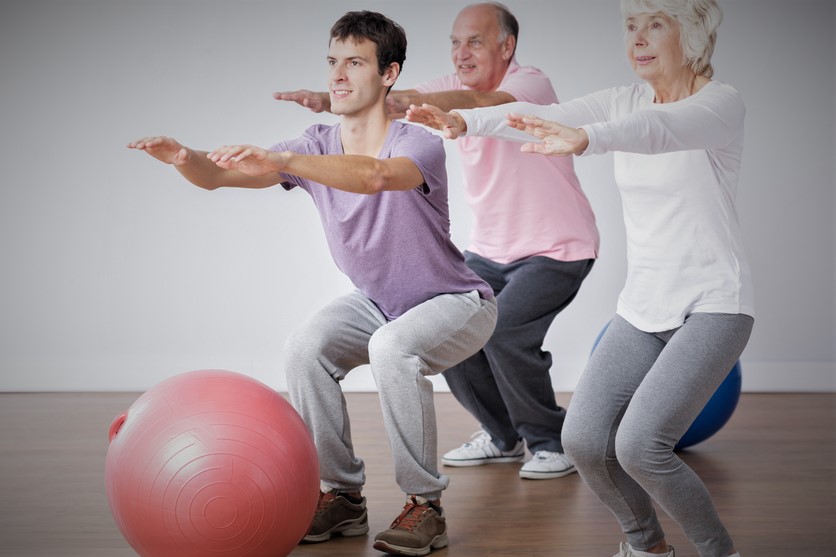
Stand with your feet shoulder-width apart.
Engage your core muscles and gently squat down.
As you squat, bend from your hips.
Keep your back straight as you push your hips back and counterbalance by leaning your torso forwards.
Don’t allow your knees to travel too far forward.
Your weight should be on your heels, not your toes.
Tense your buttock at the bottom of the squat and keep them tense as you straighten to the start position.
TIP: imagine you are trying to sit down in a chair that is too far away from you.
2. Pelvic Tilting 5 reps/3 sets
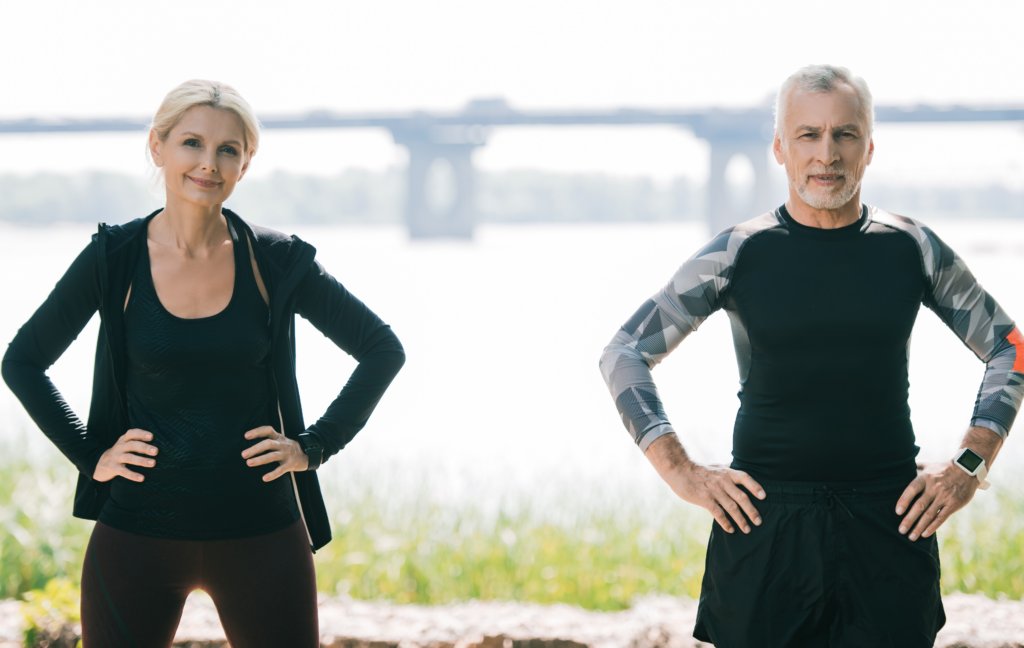
Stand up straight with your feet shoulder width apart.
Have your knees softened,
Tilt your pelvis by tightening your stomach and buttock muscles, flattening your lower back and tucking your tail bone under.
Then stick your tail bone out, relaxing your abdominal muscles and arching your lower back.
Ensure your upper body and shoulders remain upright and relaxed throughout.
Repeat the movement, ensuring you breate steadily throughout.
TIP: Go slow, and make sure to breathe deeply and exhale as you tilt your pelvis through core contraction Keep your arms across your chest.
3. Upper trunk rotation Hold 10 seconds per side 3 to 5 reps/3 sets

Stand with your feet shoulder width apart, with your knees slightly bent.
Place your arms across your chest.
Turn your body left then right, and gradually increase the amount of movement.
TIP: hold core tight and ensure your head, hips and lower body are pointing straight,
4. Reverse fly T 5 reps/ 1 – 3sets

Hold a resistance band in both hands and gather up some tension.
Start with your hands at chest height and your arms straight and move them out in a “T” shape, keeping your shoulder blades back and down.
Control the movement back to the start position and repeat.
TIP: You can use a towel or just your arms. Ensure you are squeezing shoulder blades together to activate muscles.
5. Heel raises 5 reps/3 sets

Rise up onto your toes, controlling the movement as you lower back down to the start position.
Keep your knees straight throughout the exercise.
TIP: For extra resistance, add 1 kg (2.2 lbs) of weights on your shoulders.
After completing these, do a short warm up on your bike by peddling in an easy gear for 5 -10 minutes. This short pre-ride routine will get your body ready for your ride.
You can also do these exercises during your ride while after taking a break on a longer ride.
Post Ride Exercises
1. Piriformis/gluteals stretch Hold 10 seconds per leg 3- 5 reps/ per leg
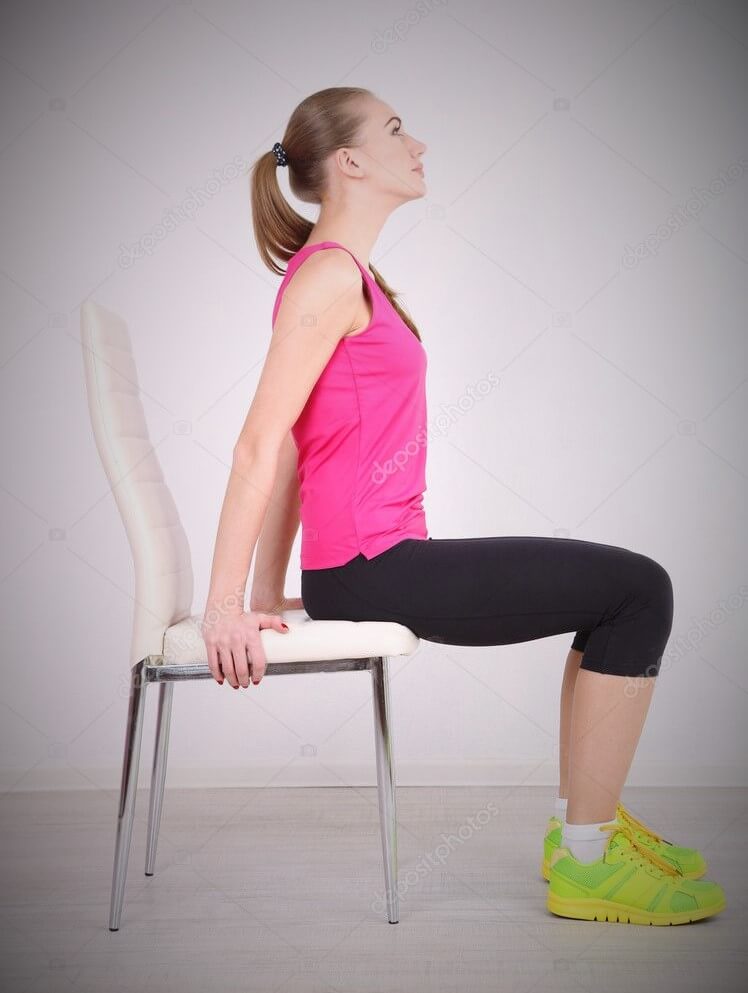
Sitting on a chair, move forward by bringing your sitting bones to the edge of the chair.
Straighten both legs out in front of you.
To stretch your right glute, cross your right ankle on top of your left.
Slide your right ankle up along your shin, bending your knee until your right ankle sits on top your knee.
Let your right knee drop towards the floor.
If this is enough of a stretch for you, stay in this position. Inhale and emphasize the stretch as you exhale.
If you can stretch more, keep your back straight and bend your left knee, sliding your foot along the floor.
If you would like to extend the stretch even further, gently press down with your right forearm onto your right knee.
Make sure you keep your back straight.
To come out of this position, straighten your left leg.
Slide your right leg down your left, and bring your feet together.
Slide both legs in by lifting your knees and push yourself back to a neutral seated position.
Repeat for left leg.
TIP: use arms or towel as assistance to bring foot/ankle up at beginning of stretch,
2. Hamstring Stretch Hold 10 seconds per leg 3 – 5 reps/per leg
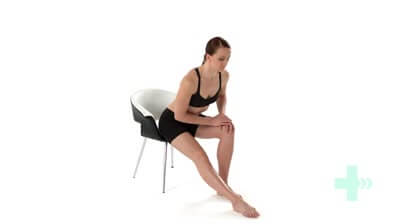
Repeat with left leg
Sitting on a chair, place your right leg out in front of you.
Straighten your knee, keeping your foot on the floor.
Keeping your back straight, lean forwards from your hips until you feel a stretch down the back of the thigh.
Hold and then relax.
3. Quadriceps stretch Hold 10 seconds per leg 3 – 5 reps/ per leg
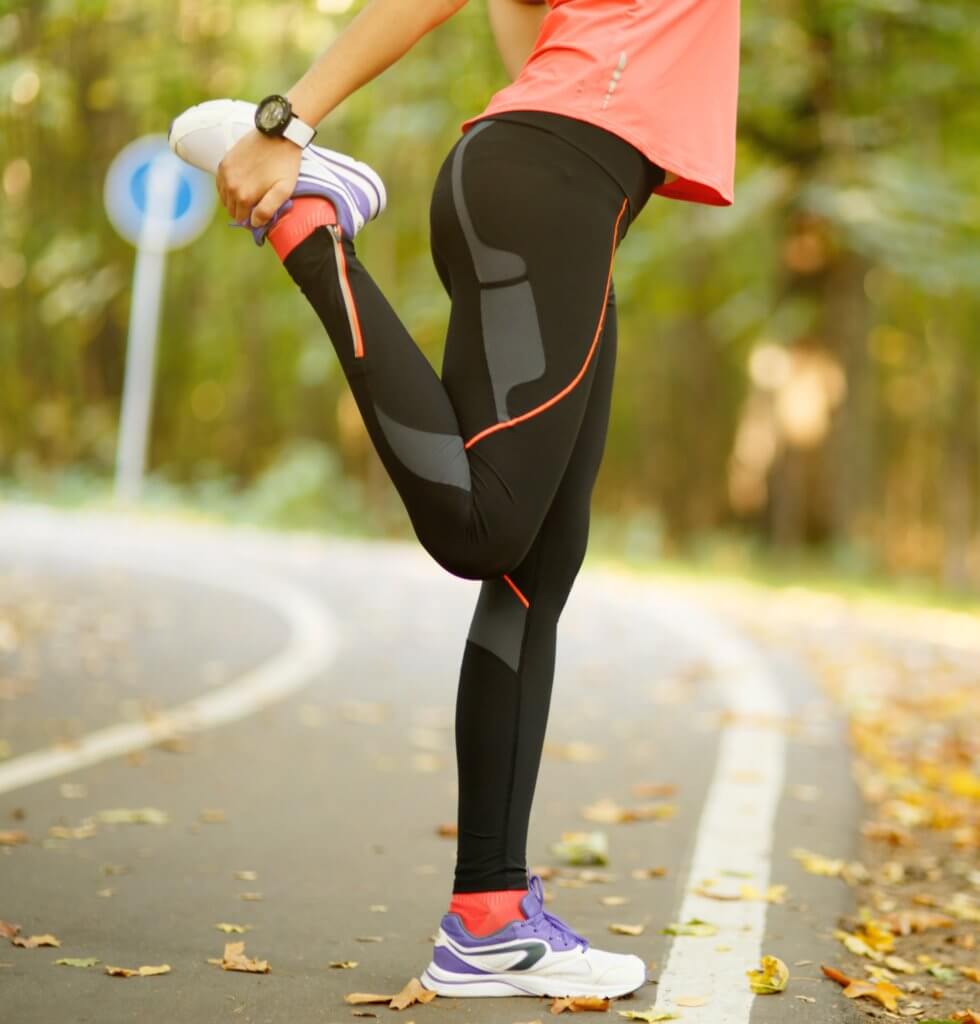
Standing straight, move close to a wall or other supporting surface.
Bend your right knee and move your heel towards your buttock.
Hold the top of your foot with your hand gently pulling your heel towards your buttock until you feel a stretch in the front of your thigh.
Ensure you keep your knees together.
Hold this position.
Repeat exercise for left leg.
TIP: keep your core tight to avoid your lower back from arching. Hold onto a chair or wall as required.
4. Standing straddle Hold 10 seconds per leg 3- 5 reps/ per leg

Stand with your feet as wide as possible apart with toes pointing forward.
Lean to one side and bend this knee, resting your hands on your knee for stability.
Keep your heels flat on the floor and the other leg straight as you feel this stretch through the inner thigh.
Repeat in other direction.
TIP use counter or chair if more comfortable to support weight.
5. Gastrocnemius stretch Hold 10 seconds per leg 3 – 5 reps/ per leg
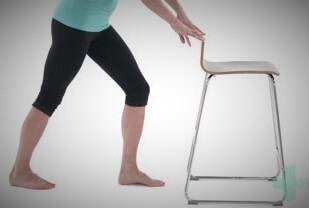
In a standing position, hold on to a table or chair for support while stepping the right leg behind you.
Keep the heel on the floor and the toes pointing forwards.
Bend the front knee, moving your body forwards, until you feel a stretch in the back of the calf.
Make sure your heel does not come off the floor and your back knee does not bend. Switch legs.
6. Pectoralis stretch Hold for 10 seconds per arm 3 – 5 reps/ per arm

Stand with one side of your body close to the wall while placing your forearm down a door frame around shoulder height.
Keep your forearm on the wall while taking one step forward on the leg closest to the wall and slowly rotate your chest away until you feel a stretch across your chest.
Be careful not to allow the shoulder to hunch.
Hold this position.
Switch arms.
Tip: You can do both arms at same time through doorway.
Staying Fit to E-bike
As a previous post highlights, cycling offers a lot of heath benefits. However, it doesn’t provide the full range of exercise benefits you are looking for or need to stay fit. As an older cyclist, it can be beneficial to follow a regular exercise program to focus on maintaining your strength, flexibility, and mobility to complement the cardo benefits cycling provides. Maintaining a good level of fitness is particularly important for older e-bikers to get maximum enjoyment. As e-bikes are heavier than regular bikes, having a good level of fitness ensures we can ride them with more control and confidence.
There are lots of sources for advice on specific exercise programs you can participate in. To help you choose the one right for you, it is best to discuss your needs with your healthcare and fitness professionals. They can recommend the best program to help you achieve your fitness goals while taking into account any special physical or health limitations.
As a general guide, however, I found this excellent article which is worth reading. It explores the benefits of exercise and provides examples of the type of exercises needed to keep fit.
Managing knee or hip pain
There is no doubt that knee and hip pain becomes increasingly common as we grow older. It is estimated that around 30% of 50 to 70 year olds suffer from Osteoarthritis. This form of arthritis affects the functioning of joints, particularly knees and hips. This disease can be debilitating by stopping people from remaining active and impacting your enjoyment of cycling.
The good news is your e-bike can go a long way in reducing the impact of this disease. But you may still need some additional exercises to help minimize pain or discomfort.
Danish research offers a new exercise based approach to combat the worst effects of this disease. I became aware of the GLA-D program through my physiotherapist. This program is available through local clinics across Canada and targets the joints commonly affected by osteoarthritis.
If you live in Canada, discuss the merits of it with your healthcare professional, physiotherapist, or chiropractor. I’ve started incorporating the exercise program outlined on the GLA_D website into my regular workout regime.
While the program isn’t currently available in the United States, you can share the link with your doctor or other healthcare professional to determine if it is an approach that could be of benefit.
For many, the appeal of e-biking is the ability to regain or maintain a level of fitness and good health. If you have other suggestions for pre or post ride exercises, feel free to share these so I can include them in a future update of this post.
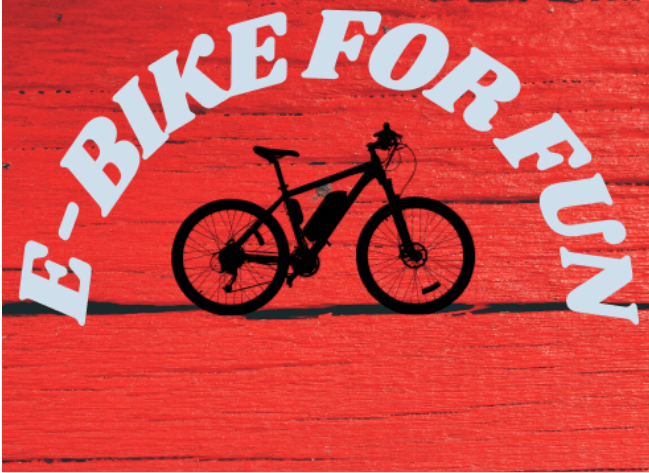
Thanks Volker, an excellent topic to address. I think I will print the suggestions and mount it next to where I park my bike. I look forward to your next post.
Glad to hear Dale. Let me know if you find a difference.